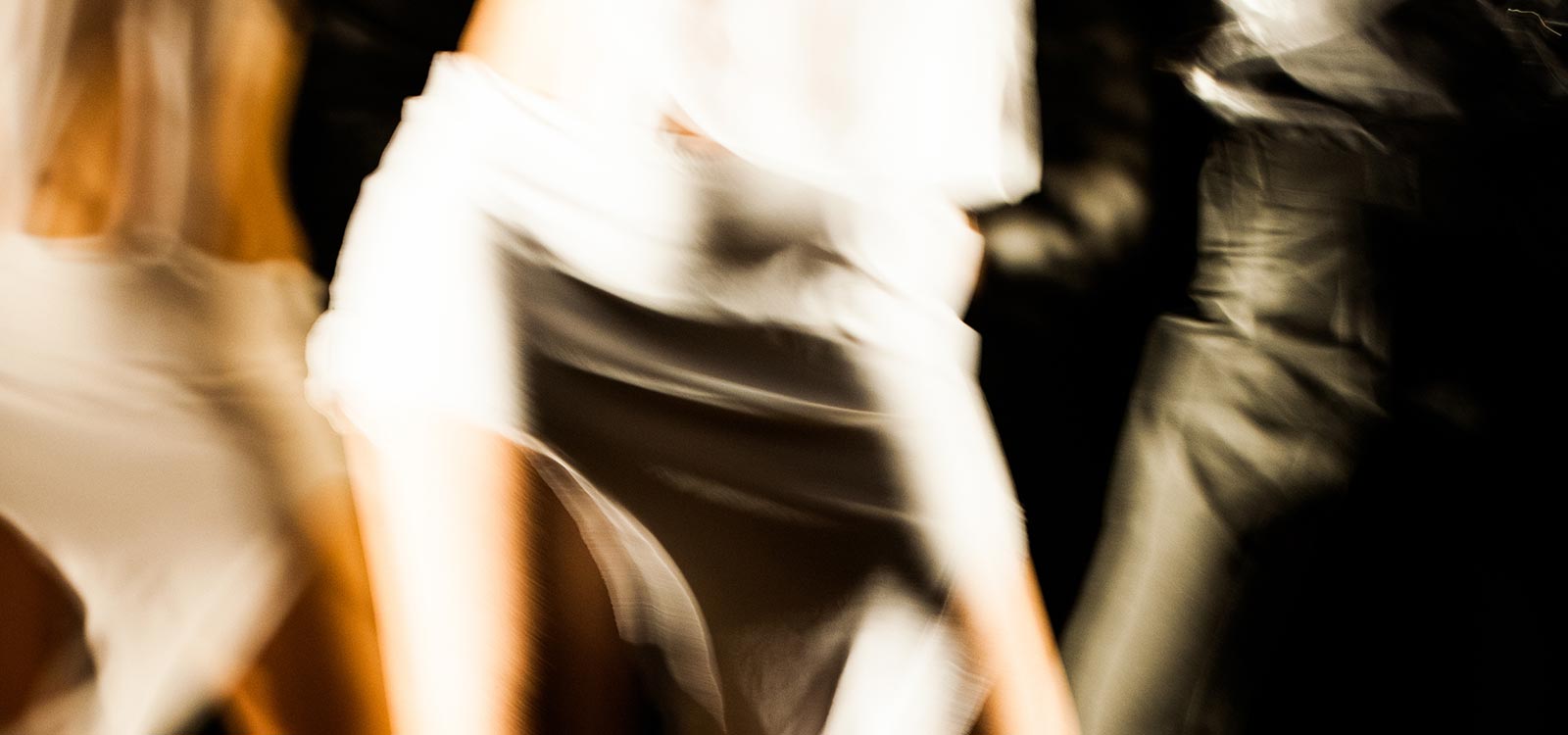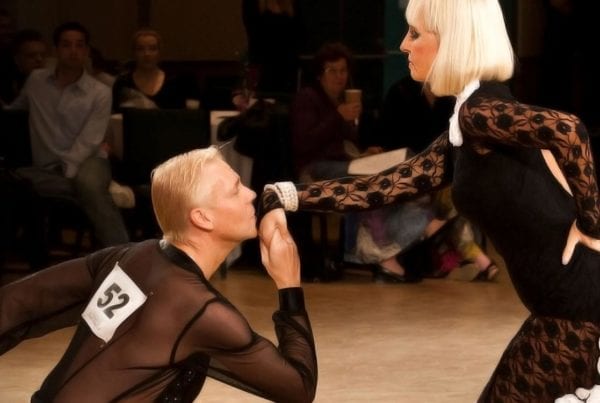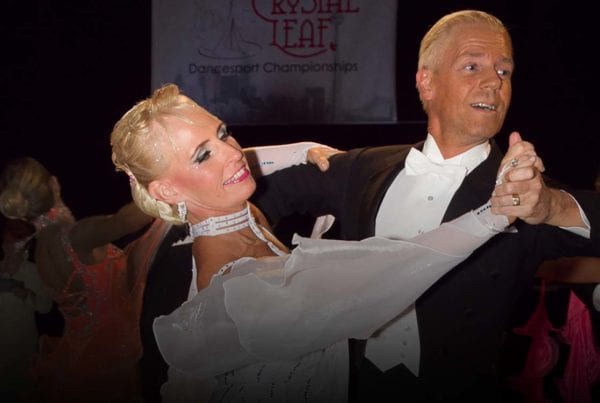He did it again last week. After a Salsa performance on Dancing With The Stars, chief judge Len Goodman told a competitor, “There wasn’t enough hip action.” At least once every season we hear a statement along these lines from Len. While completely accurate, it leads to a common misunderstanding by viewers about hip use in the Latin dances.
I’ve taught or assisted in over 2,500 group classes in my years as a dance teacher and one of the things I see again and again is students “trying” to create hip action. In an effort to get those hips moving, they stick them out to the side in an exaggerated way, believing that this is hip action. All that really does is make their body look funny.
Hip movement is not actually something you need to create as a specific action when dancing. It’s something that happens mostly through the correct use and timing of the bending and straightening of the knees.
 To understand just how important knees are to hip movement, try this exercise: Stand with your feet together. Now place all your weight on the right foot, lifting the heel of the left foot. Because the heel is up, the knee of the left foot will now be bent while the right leg is straight. Next, while keeping the heel from going down, straighten the left knee. Make sure your heel stays up! Something will move: your hip. As the knee straightens, the left hip has to go somewhere. It will automatically go up, creating a distinct hip action.
To understand just how important knees are to hip movement, try this exercise: Stand with your feet together. Now place all your weight on the right foot, lifting the heel of the left foot. Because the heel is up, the knee of the left foot will now be bent while the right leg is straight. Next, while keeping the heel from going down, straighten the left knee. Make sure your heel stays up! Something will move: your hip. As the knee straightens, the left hip has to go somewhere. It will automatically go up, creating a distinct hip action.
When Len Goodman tells a competitor, “I didn’t see enough hip action,” he is including a lot of information in a simple statement. It’s then up to the pro working with that celebrity to explain in detail what caused the lack of hip action, which involves a number of different factors.
Now, obviously there is much more to good hip action than what we can cover here, but there are some basic foundations of good hip action that we can point out without too much complicated technical detail:
1. Keep the base small
One of the main reasons that people lack hip movement is that the steps are just too big. For example, if you take a large step back, your body weight can’t arrive over that foot very easily, if at all. With your body weight trapped part way between your feet, there is no way that your hips can even be activated, no matter how much you try to bend or straighten the knees. Keeping a small base with your foot action allows you to be solidly over the standing foot, thus allowing your hips to actually engage.
2. Don’t distort the side
The most common mistake people make is to try and create a more pronounced hip line by sticking the hip out to the side. This is both unattractive and inefficient. It distorts the body. The line that represents the side of your body should be relatively straight from the ankle right up to the lower rib cage. Imagine a steel rod inside the middle of your leg that continues all the way up through your hips. The hips can rotate around that rod but not slide sideways outside of that rod.
3. Use floor pressure
Many people tend to “skate” over the floor when they dance instead of really using the floor. The more you allow your body weight to press deep into the floor with pressure, the more your hips can activate as the knee straightens. When you move from one foot to the other, there should still be a lot of pressure into the foot you are not standing on.
4. Get onto the standing foot early
Another common problem is that of taking too long to get over the standing foot. In the Latin dances, it’s important for your body weight to be positioned over the standing foot on the beat of the music. But many dancers are still trying to make it over that foot when the beat has already passed by. This causes them to be continually “chasing” the music as they never quite make it over the standing foot before they have to move on to the next foot because the music isn’t stopping to wait. The secret to getting over that foot early enough is to push from the standing leg.
5. Use the ball of the foot
In the Latin dances, your weight needs to be over the front part of the foot. Even in back steps of dances like Cha Cha and Rumba, your weight is positioned over the ball of the back foot, not over the heel or even the entire foot. If you drew a plumb line down from your shoulder, it would drop down to where the ball of your standing foot is positioned.
Combined with the need to get into that position on the beat as described above, this need to be over the ball of the foot on the beat (and with pressure into the floor) shows why it’s so important to take steps that are the right size for your level of skill at this point in time. As your skill improves and you learn to push more efficiently off the standing foot, the size of your steps will slowly increase.
You might also like: Solving common mistakes in Cha Cha













